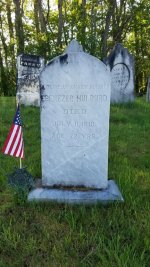David LaPell
Member
- Joined
- Mar 9, 2008
- Messages
- 5,541
- Reaction score
- 6,781
I decided to test something I had seen 20 plus years ago recently, and that was makeshift armor from the Revolutionary War.
During the Battle of Valcour Island, Benedict Arnold and his small fleet of gunboats and ships engaged the larger and more heavily armed British fleet on October 11, 1776 on Lake Champlain. On his gunboats, Arnold hung fascines on the gun deck to protect the crews from musket fire from the Mohawk allied to the British who were firing from the shoreline. There's nothing written anywhere if the fascines, the wrapped up bundles of sticks, actually protected the crews, so I decided to try it out.
I made this bundle a couple months ago and then recently took it out and shot it with a .58 caliber roundball. That's about the same size as many of the trade guns that the Native Americans used. I only loaded the gun with 50 grains of Goex FFG and aimed for the center of the fascine.
The ball seemed to have penetrated pretty well, and the roundball proved to be pretty destructive. So it seems the "armor" was more about concealment then cover.
The full scale replica Philadelphia with the fascines hung as Arnold had them.




The fasine after the roundball hit it. The wood might have slowed down but it didn't stop.



During the Battle of Valcour Island, Benedict Arnold and his small fleet of gunboats and ships engaged the larger and more heavily armed British fleet on October 11, 1776 on Lake Champlain. On his gunboats, Arnold hung fascines on the gun deck to protect the crews from musket fire from the Mohawk allied to the British who were firing from the shoreline. There's nothing written anywhere if the fascines, the wrapped up bundles of sticks, actually protected the crews, so I decided to try it out.
I made this bundle a couple months ago and then recently took it out and shot it with a .58 caliber roundball. That's about the same size as many of the trade guns that the Native Americans used. I only loaded the gun with 50 grains of Goex FFG and aimed for the center of the fascine.
The ball seemed to have penetrated pretty well, and the roundball proved to be pretty destructive. So it seems the "armor" was more about concealment then cover.
The full scale replica Philadelphia with the fascines hung as Arnold had them.




The fasine after the roundball hit it. The wood might have slowed down but it didn't stop.




